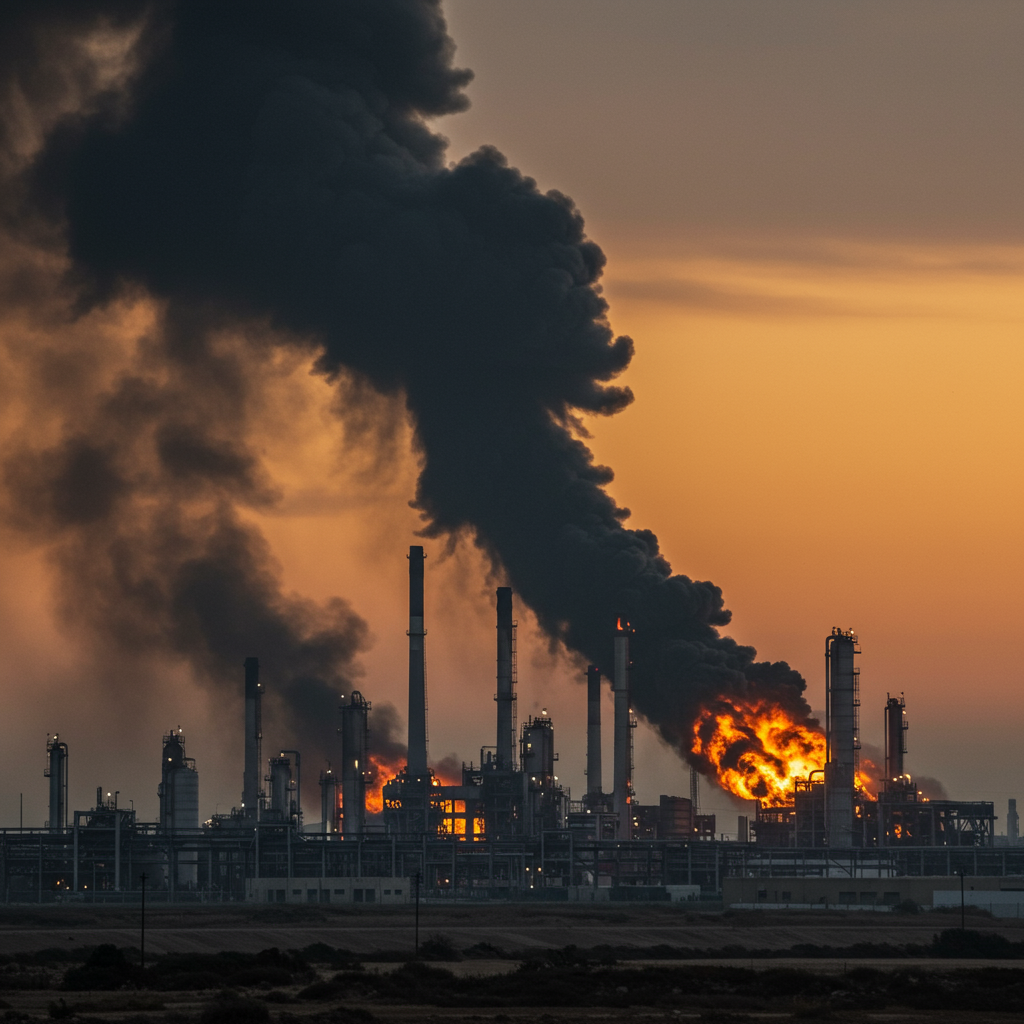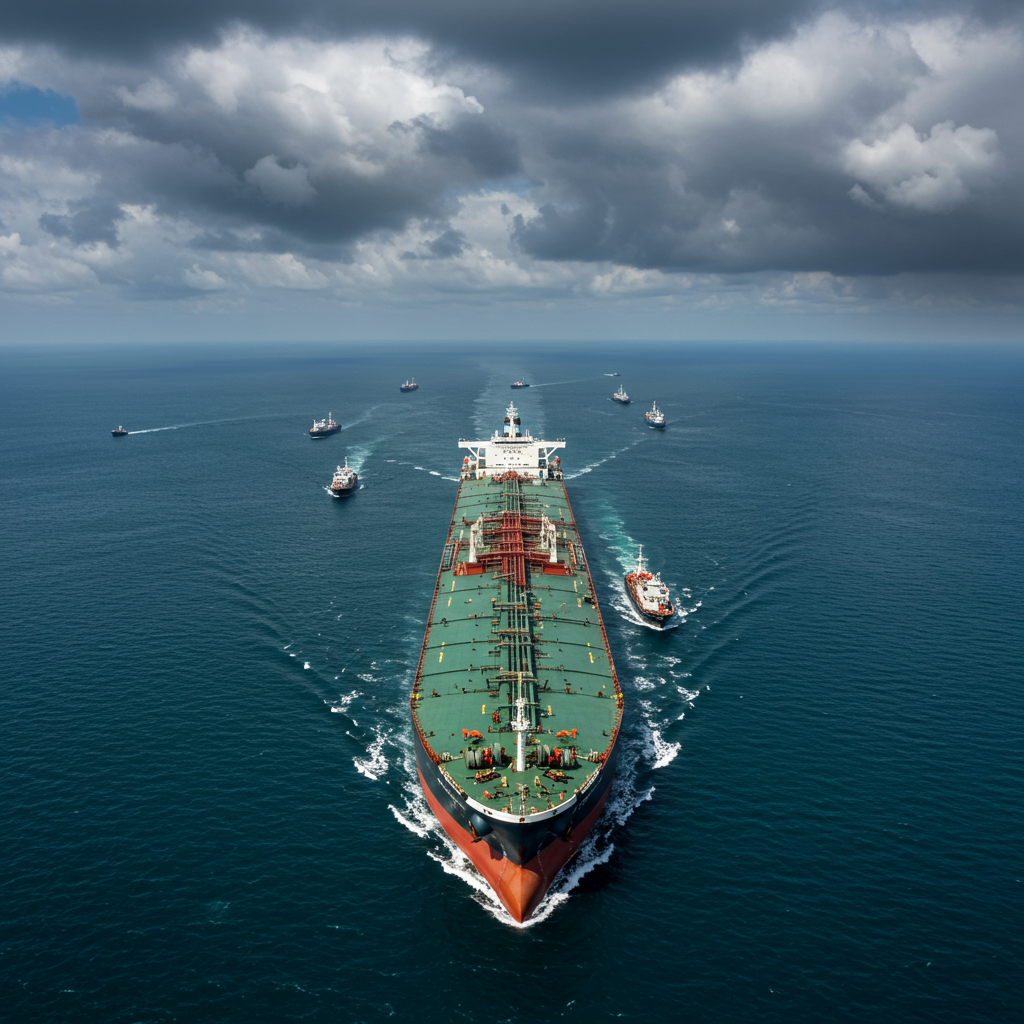Unprecedented Strikes: Israel Targets Iran’s Energy Lifeline
In a significant escalation of the long-standing rivalry between Israel and Iran, Israeli forces launched unprecedented strikes late Saturday, directly targeting key Iranian oil and gas facilities. This marked a major departure from previous confrontations, which had largely avoided hitting Iran’s vital energy infrastructure, and has fueled fears of a widening conflict alongside potential turmoil in global energy markets.
The attacks followed an intense exchange of hostilities that began Friday with Israeli strikes reportedly targeting military and nuclear sites and involving the assassination of top officials. Iran retaliated with ballistic missiles and drones aimed at multiple Israeli cities. Amid global calls for de-escalation, the conflict took this sharp turn towards economic targets.
Iranian state media reported a heavy human cost, with at least 80 people killed and 800 wounded over two days. Israeli authorities reported 10 deaths and over 180 injuries from the Iranian strikes.
Key Iranian Energy Sites Targeted
The weekend strikes reportedly hit several critical components of Iran’s energy network. According to reports confirmed by Iran’s Ministry of Petroleum and state media, key targets included:
South Pars Gas Field (Offshore Bushehr Province): Described as the world’s largest natural gas field, shared by Iran and Qatar (where it’s known as the North Field). An Israeli aerial attack caused a fire at the onshore Phase 14 processing facility and forced the shutdown of an offshore production platform. This field is crucial, providing roughly two-thirds of Iran’s total domestic gas supply and holding nearly 20 percent of known global gas reserves.
Shahran Fuel and Gas Depot (Tehran): Confirmed by Iran’s Petroleum Ministry as being struck. This facility is one of Tehran’s largest fuel storage and distribution hubs, capable of holding close to 260 million litres and vital for supplying petrol, diesel, and aviation fuel to the capital’s northern districts.
Tehran Refinery (Shahr Rey, South of Tehran): Initial reports from state media mentioned a fire at this site. While Iran’s Student News Network later denied the refinery itself was hit, claiming a fuel tank outside caught fire, the location remains strategically significant. It is one of Iran’s oldest and largest refineries, processing nearly 225,000 barrels per day and crucial for fuel logistics in the densely populated Tehran region.
Fajr Jam Gas Plant (Bushehr Province): The Iranian Petroleum Ministry confirmed this major processing facility, which handles gas from the South Pars field, was also hit. Disruption here threatens domestic electricity and fuel supplies, particularly for Iran’s southern and central provinces, which already face significant power grid stress.
Why These Targets Matter: Economic Power and Global Repercussions
Targeting Iran’s energy infrastructure represents a deliberate strategic shift for Israel. Historically, allies like the US had pressured Israel to avoid such strikes due to the potential impact on global oil and gas prices. Iran holds immense energy wealth, possessing the world’s second-largest proven natural gas reserves and third-largest crude oil reserves, according to the U.S. Energy Information Administration (EIA).
Striking these sites directly impacts Iran’s economic lifeline. The energy sector, though described by some analysts as already “wobbling” due to sanctions and underinvestment, is the primary source of state revenue. Disrupting domestic energy supply also carries a significant economic cost; Iran’s Chamber of Commerce estimated that power outages alone cost the economy about $250 million per day recently.
Furthermore, the attacks have immediate and concerning implications for global energy markets.
Price Volatility: Even before the weekend strikes on energy sites, the initial Israeli attacks on Friday caused oil prices to jump by as much as 9%. Analysts anticipate sharp price increases when markets reopen, reflecting the increased risk premium.
Limited Global Spare Capacity: A major concern highlighted by analysts is the limited spare production capacity available globally within the OPEC+ alliance. This capacity, primarily held by Saudi Arabia and the UAE, is estimated to be roughly equivalent to Iran’s current output. Should Iranian production be severely impacted, utilizing this spare capacity would leave little buffer against other potential disruptions worldwide, making meeting global demand challenging.
- Strait of Hormuz Threat: Adding to market uncertainty, Iran has reportedly considered closing the Strait of Hormuz. This vital chokepoint, separating Iran from Oman and the UAE, is the sole maritime entry to the Gulf and sees nearly 20 percent of global oil consumption pass through it. Any disruption here, which the EIA calls the “world’s most important oil transit chokepoint,” would send oil prices soaring dramatically, potentially by $20 per barrel or more.
- www.aljazeera.com
- finance.yahoo.com
- www.aljazeera.com
- qz.com
- www.oedigital.com
Experts view the targeting of these energy assets as “pretty significant” and indicative of an “escalatory cycle” in the region. Some analysis suggests Israel may be aiming to exert economic pressure on Iran or even attempting to provoke a reaction that could draw in allies like the US. Other perspectives argue that the strikes are part of a broader political strategy by the Israeli leadership aimed at securing impunity amidst international pressure over other regional conflicts and potentially distracting from domestic issues.
Regardless of the precise motivations, the strikes on Iran’s vital energy hubs mark a dangerous new phase in the conflict, threatening not only regional stability but also the delicate balance of global energy supply and demand.




